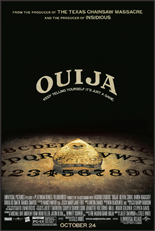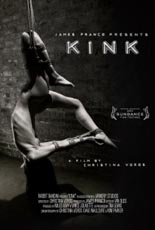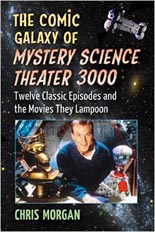
 In adapting its same-named board game to the big screen with Ouija, toymaker Hasbro has taken an interesting marketing approach: Those Ouija boards we sell? They will fucking kill you!
In adapting its same-named board game to the big screen with Ouija, toymaker Hasbro has taken an interesting marketing approach: Those Ouija boards we sell? They will fucking kill you!
After her BFF jacks around with the satanic tool and then promptly — and fatally — hangs herself with Christmas lights, the mousy Laine (Olivia Cooke, The Quiet Ones) gets the bright idea to gather their friends and contact the dearly departed via the Ouija; malevolent spirits awaken.
If watching people play Ouija sounds dull, that’s because it is. Scenes of such mark countless horror films — Witchboard and Paranormal Activity, just off the top of my head — but here, first-time director Stiles White (screenwriter of 2005’s equally blah Boogeyman) has made a feature full of them. Too bad dialogue like “Are you pushing it?” and “Wasn’t me, I swear!” carries neither the stakes nor the suspense as when Rosemary Woodhouse dug out the Scrabble tiles.
 With a PG-13 rating that suggests how little it tries, Ouija is a thoroughly unimaginative entry in the Dead Teenager subgenre. To call its characters one-note is not just too kind, but one level too many; they’re underdeveloped to the point of barely being introduced. Each exists solely for the purpose of receiving the message “HI FRIEND” from one step beyond. (The supernatural force doing the writing goes to so much trouble to deliver the greeting, you’d think it’d at least make the effort to include the needed comma between the two words.)
With a PG-13 rating that suggests how little it tries, Ouija is a thoroughly unimaginative entry in the Dead Teenager subgenre. To call its characters one-note is not just too kind, but one level too many; they’re underdeveloped to the point of barely being introduced. Each exists solely for the purpose of receiving the message “HI FRIEND” from one step beyond. (The supernatural force doing the writing goes to so much trouble to deliver the greeting, you’d think it’d at least make the effort to include the needed comma between the two words.)
Ultimately, the only unsettling sight of Ouija is having to sit through two scenes of women flossing their teeth. Ick! If the spirit moves you to watch this one, point your internal planchette toward “NO.” —Rod Lott


 Co-produced by James Franco, the documentary
Co-produced by James Franco, the documentary 






